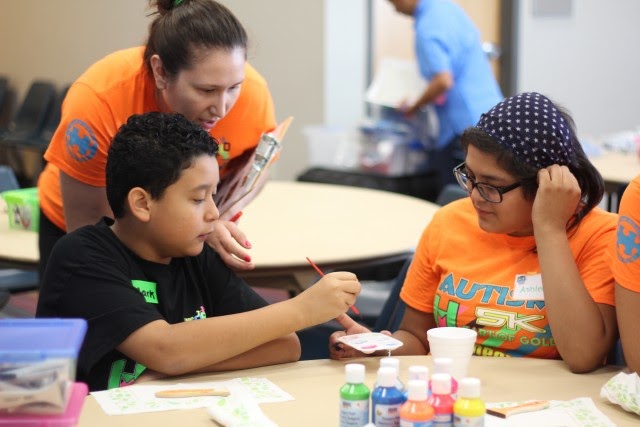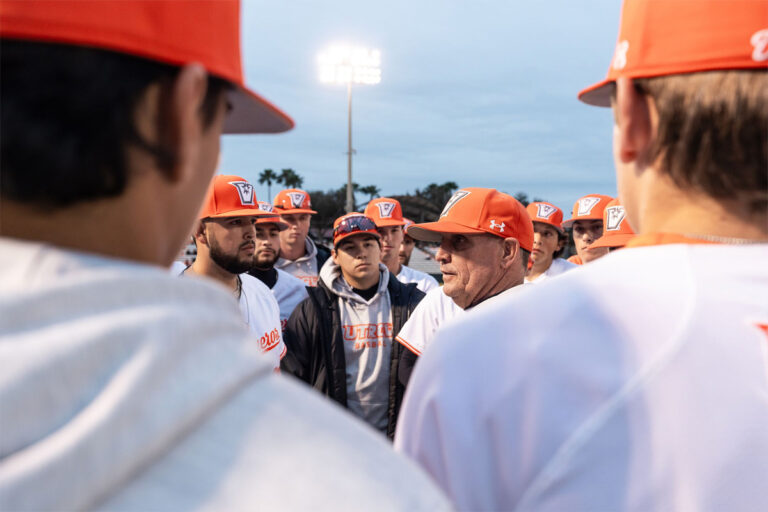
Photo Courtesy Team Mario
Valeria Henderson | THE RIDER
Earlier this month, the National Student Speech Language Hearing Association (NSSLHA) hosted a virtual meeting with Team Mario about Autism Awareness Month.
Team Mario, an Edinburg nonprofit organization, started seven years ago. Mario stands for Making a difference, Advocating for families, Raising awareness, Inspiring hope and Overcoming the impossible, according to its website.
Mario Moreno is the inspiration for the organization, which was started by his mother, Melinda. He was diagnosed with autism spectrum disorder (ASD) after his second birthday. The team consists of families, friends and professionals who raise awareness of autism.
“Our goal is to promote awareness but also acceptance,” said Lisa Beccera-Walker, one of the program directors for Team Mario. “Our goal is for our community to accept all of our families and individuals with different abilities because we are part of society and every single person is unique in their own way. And they are valued members in society and our community.
Students can make a difference by volunteering, Beccera-Walker said. The university and Team Mario have collaborated for various events. Team Mario’s Christmas event and summer camps are held at UTRGV.
The meeting, which took place via Zoom, discussed autism awareness.
“It was to bring awareness to the community,” said Sonya Salinas, faculty adviser for NSSLHA. “It was open for anyone to attend. It was to bring awareness about autism, what Team Mario offers in the [Rio Grande] Valley, to raise awareness in community events … and to involve the UTRGV community via NSSLHA in some of those events.”
NSSLHA is open to communication sciences and disorders majors. As members of NSSLHA, students participate in volunteer events in the Valley. Its main goal is to get people to volunteer and gain experience working with children with disabilities.
“It really does motivate me to become a person like that, to be a leader within our community,” said Jazmin Garces, a senior communication sciences and disorders major who serves as a liaison for NSSLHA. “I consider [Team Mario and Beccera-Walker] to be leaders within our community because they stand out. They’re not just going about their day; they go the extra mile, and they do more for any kid, but especially kids that have a disability or are different.”
Students interested in becoming speech language pathologists or audiologists can contact NSSLHA.
Autism is a neurodevelopmental disorder, said Jessica Stewart. an assistant professor in the Department of Communication Sciences and Disorders at UTRGV.
Many misconceptions revolve around ASD. However, the rise of autism awareness is combatting the public’s preconceived notions.
“I think the big misconception is the vaccination,” Stewart said. “A lot of people think that vaccinations cause autism, and that is definitely not true; and the research does not support that. Vaccines don’t cause ASD.”
The number of children being diagnosed with ASD is increasing.
“One in 54 children has been identified with autism spectrum disorder, according to the [Centers of Disease Control and Prevention],” said Ruth Crutchfield, an associate professor of communication sciences and disorders at UTRGV. “This number just keeps getting more and more prevalent as the years go by. According to the CDC, ASD is more than four times more common among boys than girls. And it does occur in all racial, ethnic and socioeconomic groups. The prevalence of autism spectrum disorder among Black and Hispanic children in the U.S. has increased by more than 40% since 2014, according to the Journal of the American Medical Association. So, there’s been a higher rate in black and Hispanic children. The prevalence of a disorder in Hispanic children rose from 2014, rose to 2.1 from 1.5%. So it used to be 1.5% of the Hispanic population had autism spectrum disorder. Now, it’s 2.1%. So, it’s increasing.”
Crutchfield encourages students to be kind and have empathy.
“Being kind, being kind and understanding,” she said. “Placing yourself in their position. How do they see the world? A perfect way for a university student to help facilitate any situation with someone who has autism spectrum disorder is to place themselves in their shoes.”





